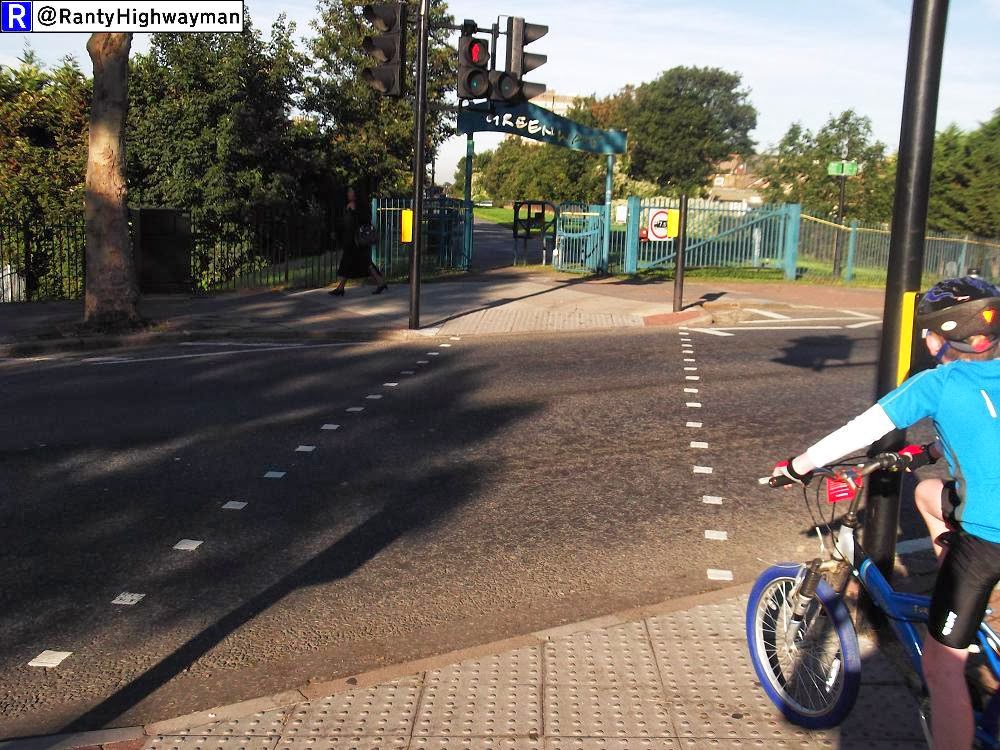I guess many of you recognised the title of this post as honda's tag line and of course it is a part of the process of using advertising to raise "brand awareness", flog us stuff and so on.
There have been many memorable adverts over the years and you will have your favourites, whether clever, witty, fronted by celebrities of the day or even causing incandescent outrage in the Daily Mail (or similar) such as Tango's Happy Slap which was banned (or was it? I cannot remember or be bothered to check quite frankly).Of course, today's news is the ruling of the Advertising Standards Authority in response to 5 complaints about Cycle Scotland's Nice Way Code advert "Horse" advert. The ASA concluded;
The ASA acknowledged that the ad was primarily encouraging motorists to take care when driving within the vicinity of cyclists.
We noted that the cyclist in the final scene was not wearing a helmet or any other safety attire, and appeared to be more than 0.5 metres from the parking lane. We also acknowledged that the cyclist was shown in broad daylight on a fairly large lane without any traffic.
 We understood that UK law did not require cyclists to wear helmets or cycle at least 0.5 metres from the kerb. However, under the Highway Code it was recommended as good practice for cyclists to wear helmets. Therefore, we considered that the scene featuring the cyclist on a road without wearing a helmet undermined the recommendations set out in the Highway Code. Furthermore, we were concerned that whilst the cyclist was more than 0.5 metres from the kerb, they appeared to be located more in the centre of the lane when the car behind overtook them and the car almost had to enter the right lane of traffic. Therefore, for those reasons we concluded the ad was socially irresponsible and likely to condone or encourage behaviour prejudicial to health and safety.
We understood that UK law did not require cyclists to wear helmets or cycle at least 0.5 metres from the kerb. However, under the Highway Code it was recommended as good practice for cyclists to wear helmets. Therefore, we considered that the scene featuring the cyclist on a road without wearing a helmet undermined the recommendations set out in the Highway Code. Furthermore, we were concerned that whilst the cyclist was more than 0.5 metres from the kerb, they appeared to be located more in the centre of the lane when the car behind overtook them and the car almost had to enter the right lane of traffic. Therefore, for those reasons we concluded the ad was socially irresponsible and likely to condone or encourage behaviour prejudicial to health and safety.The ad breached BCAP Code rules 1.2 (Social responsibility), 4.1 and 4.4 (Harm and offence).
The ASA stated that the following action should be taken;
The ad must not be broadcast again in its current form. We told Cycling Scotland that any future ads featuring cyclists should be shown wearing helmets and placed in the most suitable cycling position.
Lots of bloggers have done this one and although I am jumping on the band wagon (safely of course), I have a few slightly different comments and with a highways twist of course. First, I have never been a huge fan of "marketing" in road safety as most of it is crap in my view, although I am a fan of the 30 for a reason adverts and those like it - possibly because I have children of my own. I would much rather we did less marketing and promotion in favour of building stuff, but I have a vested interest.
 |
| Vauxhall's Corsa "smoke" advert depicting people leaning out of car windows wafting smoke was fine by the ASA |
As for Cycle Scotland's advert, the first 0.5 metres of the carriageway appears to have had a haunch repair (the carriageway edge), or a utility trench reinstatement or the like. You don't want to be cycling at the kerb edge as you will catch your pedals, you don't want to be cycling along the joint between the main carriageway surface and the repaired area as it may well grab your wheels and throw you off.
Additionally, the final frame of the advert shows potholes well out from the kerb, perhaps a metre or so and therefore, the woman on the bike is sensibly keeping away from the damaged surface. The other thing which is about 0.5 metres wide is a carriageway gully (drain to some) which is not something to cycle on either.
The advertising industry does need to be reined in from time to time and I am glad that we have bodies like the ASA, but their judgements on adverts should not encroach into areas of law or government policy as this ruling has. The Highway Code may recommend wearing a helmet, but it is not the law. Me blasting along CS2 on a training run, probably a good idea. On a cycle track going to the supermarket at 5mph with Ranty Mini on a bike with stabilisers, don't be silly.
 |
| Old Street. Have we got your attention yet? Image Google Streetview. |
No, all of this crap makes it a little more difficult to get around by bike and makes my job slightly more difficult in trying to deal with the attitudes of some people. I hope the ASA change their ruling or are forced to. In the meantime though...
Update 30/1/14
Turns out that it wasn't a repair she was avoiding, it was cobbles! Thanks to @andy_fab.
Oh and now the ASA has withdrawn the ruling pending a review!














.jpg)






